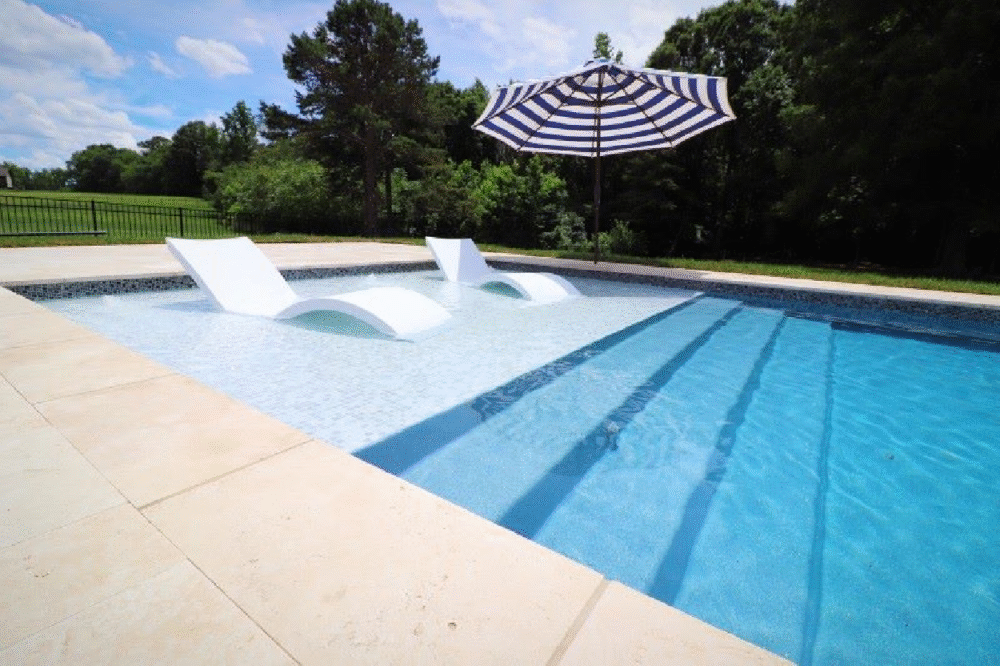Choosing between fiberglass and concrete pools is one of the most important decisions you’ll make when building your backyard oasis. Both options have loyal followings and genuine advantages, but they excel in different areas. At Sundaze Fiberglass Pools, we believe in helping homeowners make informed decisions based on facts, not sales pitches. While we specialize in fiberglass pools, we’re committed to transparency and want you to understand what makes each pool type unique. Whether you prioritize quick installation, low maintenance, design flexibility, or long-term durability, this unbiased comparison will help you determine which pool is truly right for your home and lifestyle.

Understanding Construction Methods
The way a pool is built directly impacts how it performs, how long it lasts, and how much maintenance it requires. Fiberglass pools are manufactured in factory environments using pre-formed molds. The complete pool shell is created as a single unit, transported to your property, and installed into an excavated hole. This controlled manufacturing process ensures consistent quality and precise construction.
Concrete pools, also called gunite or shotcrete pools, are built entirely on-site. Workers excavate the desired shape, install steel reinforcement, and spray concrete over the framework. After the concrete cures, the surface receives a finish layer of plaster, tile, or aggregate. This on-site construction method offers complete flexibility in design but requires significantly more time and labor.
Installation Timeline: Speed vs. Customization
If you’re eager to start enjoying your pool this season, installation time matters. Fiberglass pools install in just a few weeks from excavation to ready-to-swim. The pre-built shell simply needs placement, plumbing connections, and equipment setup. Minimal disruption to your property means less yard damage and faster enjoyment.
Concrete pools require several months for installation. The on-site construction process involves weeks of excavation, reinforcement work, concrete application, curing time, and finishing. While this extended timeline allows for complete customization, it also means extended construction disruption to your daily life.
Maintenance: Effort, Time, and Ongoing Costs
Maintenance differences between these pool types are significant. Fiberglass pools feature smooth, non-porous gel coat surfaces that resist algae growth and staining. Weekly maintenance is straightforward—minimal brushing and vacuuming because debris and algae don’t readily stick to the surface. Chemical requirements are lower too, as the non-reactive surface doesn’t affect water pH or alkalinity.
Concrete pools demand more intensive upkeep. The porous surface creates an ideal environment for algae to thrive. Weekly scrubbing with a steel brush is necessary to prevent algae buildup. Concrete pools require more chemicals to maintain proper water balance and prevent staining. Periodically, acid washing becomes necessary. Every 10-15 years, the plaster finish requires complete resurfacing—a significant undertaking. Over time, maintenance demands add up considerably.
Durability and Lifespan
Fiberglass pools are exceptionally durable. The flexible yet strong fiberglass shell adapts to ground movement and temperature changes without cracking. Modern fiberglass pools can last many decades with proper care. The gel coat finish is engineered for fade and UV resistance, maintaining its appearance through years of use and weather exposure.
Concrete pools are also durable and can last many decades with diligent maintenance. However, concrete is more prone to cracking as soil settles and ground shifts. While concrete is structurally strong, the finished surface gradually deteriorates and eventually requires replacement. A well-maintained concrete pool with quality finishes can achieve impressive longevity.
Customization: Design Possibilities
Concrete pools win on customization. Because they’re built on-site, virtually any size, shape, or depth is possible. Vanishing edges, built-in spas, rock formations, and waterfalls can all be integrated into concrete designs. For homeowners with specific visions or unique yard constraints, this flexibility is invaluable.
Fiberglass pools come in pre-designed molds, limiting size and shape options. However, modern manufacturing has dramatically expanded fiberglass design possibilities. Tanning ledges, built-in spas, various depths, and numerous aesthetic finishes are now available. The design gap between fiberglass and concrete has narrowed significantly.
Making Your Decision
Choose fiberglass if you prioritize quick installation, minimal maintenance, lower chemical usage, and reduced long-term demands. Choose concrete if you want unlimited design freedom and don’t mind the extended timeline and higher maintenance commitment. Both are viable options—it depends on your priorities.
At Sundaze Fiberglass Pools, we’re here to discuss your specific needs, yard conditions, and lifestyle to help you make the right choice. Our team wants you to be completely satisfied with your pool investment.
Ready to explore your pool options? Contact Sundaze Fiberglass Pools today for a free consultation. Let’s create your perfect backyard retreat.

